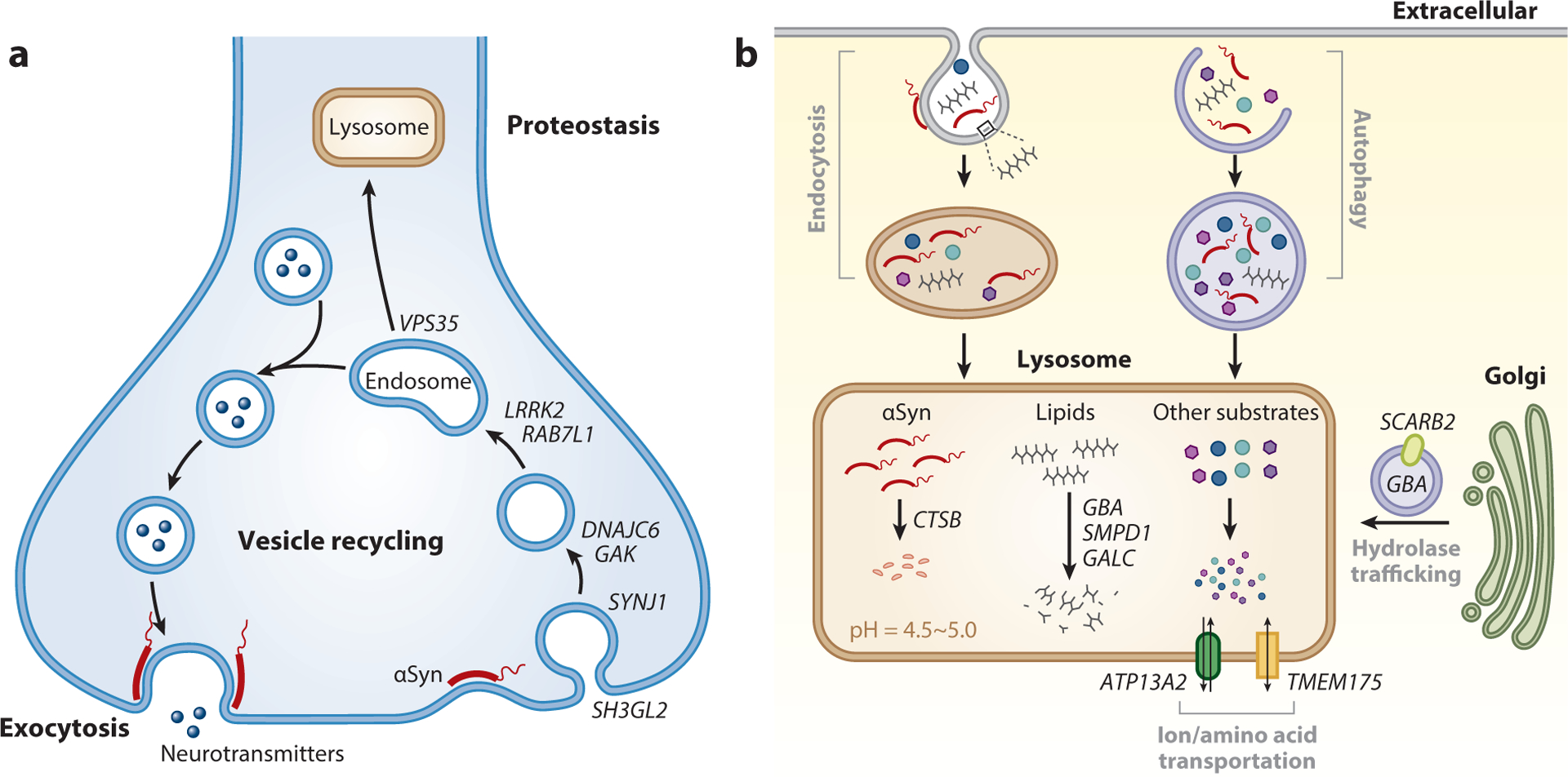Figure 3.

Parkinson’s disease (PD) genes implicate synaptic and lysosomal mechanisms. (a) The synapse. Synaptic transmission is initiated when a presynaptic nerve terminal releases neurotransmitters, via exocytosis, into the synaptic cleft, resulting in a response in the postsynaptic cell. Synaptic vesicles are recycled by clathrin-mediated endocytosis and refilled with neurotransmitters. DNAJC6, SYNJ1, GAK, and SH3GL2 participate in clathrin-coated vesicle endocytosis and recycling, whereas VPS35, LRRK2, and RAB7L1 modulate endolysosomal trafficking. Under physiological conditions, alpha-synuclein (αSyn) regulates neurotransmitter release possibly via pleiotropic actions, including endocytosis, synaptic vesicle clustering, and exocytosis. (b) The lysosome. αSyn reaches the lysosome either through endocytosis or autophagy. Membrane lipids are also trafficked within the endolysosomal system. Many PD genes encode lysosomal proteins involved in the degradation of lysosomal contents (CTSB) and membrane lipids (GBA, SMPD1, GALC), the proper trafficking of lysosomal enzymes (SCARB2), and the maintenance of the compartmental milieu (ATP13A2, TMEM175).
